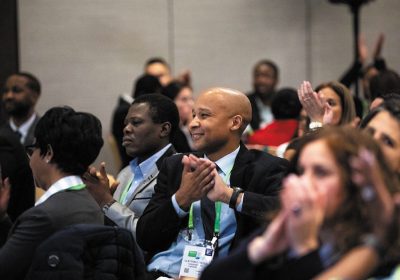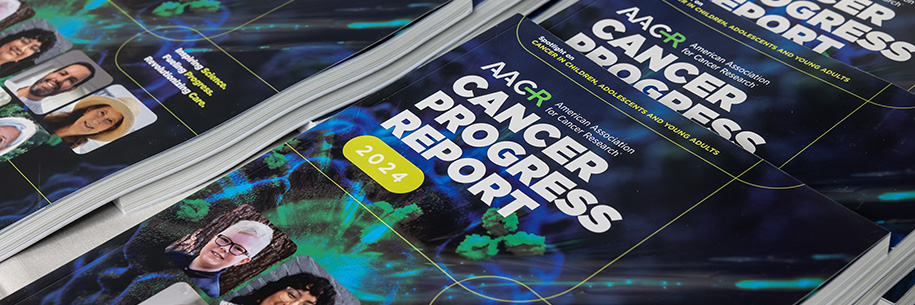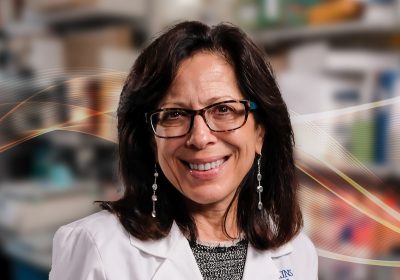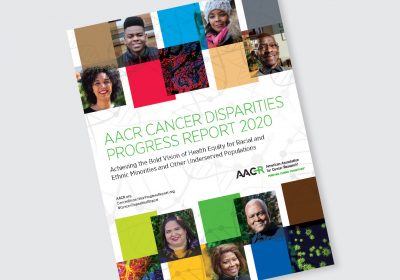The Power of Medical Research
A new treatment for brain cancer gives a young boy ‘a normal childhood.’
Mike Methner, a police officer in East Brunswick, New Jersey, had just finished field sobriety training to spot signs of drunk driving.
It was shocking, then, when he came home and noticed one of those signs—an involuntary eye movement known as nystagmus—in his 2-year-old son, Michael.
“I had literally just learned that nystagmus could be a sign of intoxication or brain injury,” he recalled. He showed it to his wife, Emily, a nurse, who called Michael’s pediatrician. A series of doctors’ appointments led to a specialist who ultimately delivered the bad news: Michael had brain cancer.
“When we saw the size and location of the tumor and realized that it might kill him, we were completely devastated,” said Emily.
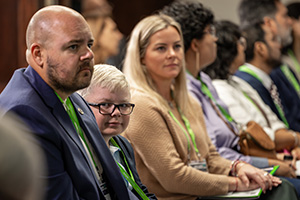
But eight years later, Michael is a thriving 10-year-old, something he and his parents attribute to a new targeted therapy and the medical research that led to its development. His story was featured in this year’s AACR Cancer Progress Report, unveiled September 18, 2024, with a congressional briefing in Washington, D.C.
The report, now in its 14th edition, “is a cornerstone of AACR’s efforts to increase public understanding of the benefits of medical research while also advocating for increased funding from the federal government to fuel and accelerate progress against cancer,” said American Association for Cancer Research® (AACR) CEO Margaret Foti, PhD, MD (hc), in remarks at the congressional briefing.
“The progress discussed in the report is clear evidence that finding cures for cancer and helping patients is an attainable goal,” added AACR President Patricia M. LoRusso, DO, PhD (hc), “but it will take commitment by cancer researchers, the government, and the community to invest in cancer research.”
Illustrating the power of medical research were the four cancer survivors in attendance, living testaments to the immense leaps cancer treatment has made in recent years. Among them was Michael, who, along with his parents and his sister, Lillian, traveled to Washington, D.C., to share his story and advocate for increased medical funding.
The Impact of Medical Research
When Michael was first diagnosed, his family explained, the standard of care for his cancer, optic nerve glioma, was still chemotherapy. So, every Monday for four years, Michael received toxic platinum-containing chemotherapy through a port in his chest and suffered the debilitating nausea and nerve pain that came with it.
The experience for Michael was “unbearable,” his father said, adding that while the treatment didn’t shrink the tumor, it did keep it at bay for a few years.
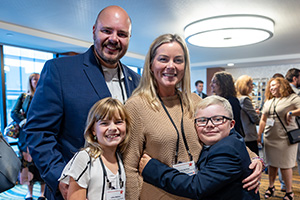
After chemotherapy stopped working, Michael switched to a targeted therapy called bevacizumab (Avastin), but that led to kidney failure and brought him scarily close to a stroke. He then moved on to trametinib (Mekinist), which halted the tumor’s growth but, like the other treatments he had tried, didn’t shrink it and came with its own set of harsh side effects.
Eventually, an experimental targeted therapy, tovorafenib, became available to Michael as part of a clinical trial. Tovorafenib is designed to block the tumor-promoting activity of mutant RAF proteins, and since Michael’s tumor had one of the RAF mutants that the drug targets, he was a candidate for the therapy.
The drug was a game changer, his parents said, not only stabilizing the tumor but actually shrinking it—the first treatment to do so—all with minimal side effects. Unlike chemotherapy, there are no ports, no weekly infusions, no days missed from school.
“He just has to take a few pills once a week and be on his merry way,” said Emily. “We are so thankful that he is allowed a normal childhood because of the research that was done to develop this targeted therapy.”
This past summer, tovorafenib was approved by the Food and Drug Administration under the brand name Ojemda, making it available to more children with brain tumors like Michael’s. This breakthrough was only possible because of decades of research discoveries, said Dr. LoRusso.
“We are so thankful that he is allowed a normal childhood because of the research that was done to develop this targeted therapy.”
–Emily Methner
“We are in a time of unparalleled opportunities in cancer research,” Dr. LoRusso continued, noting that most cancer research is supported by funds from the federal government. “Not increasing investment in cancer research will impede this momentum.”
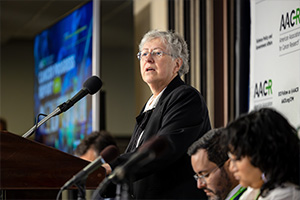
The release of this year’s AACR Cancer Progress Report was set against the backdrop of tenuous federal funding for the National Institutes of Health (NIH), the world’s largest funder of cancer research.
“Unfortunately, after supporting eight years of growing federal budgets for medical research, Congress cut NIH funding this past year for fiscal year (FY) 2024,” said Dr. Foti. She explained that the cuts were a direct consequence of budget restraints imposed by the Fiscal Responsibility Act, which passed in 2023 and mandated spending caps for FY2024 and FY2025 to combat the national debt.
The reduction to the NIH budget “threatens to curtail the medical progress seen in recent years and stymie future advances,” Dr. Foti warned.
Moving Forward and Giving Back
These days, Michael is a typical 10-year-old, fascinated by dinosaurs, graphic novels, and Star Wars (just don’t mention the sequels—he doesn’t approve), with big plans to become a researcher himself.
The type of research, though, is still a bit up in the air.
“I was going to discover how to re-create Godzilla,” he said, “but I gave that up once I realized how high his carbon footprint would be.” Now, Michael is considering some different ideas, perhaps using robotics, medicine, or a combination of the two to help other kids with cancer.
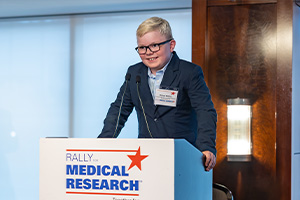
He is also passionate about advocating for medical research.
“As the recipient of all this progress, we are so close, but taking the funding away is like taking one step forward and five steps backward,” he said. “We need this funding.”
It was this passion that convinced Michael’s family to go public with their experience.
“This is all very much out of our wheelhouse, but it’s something Michael was clear about wanting to do,” said Emily. “Sharing his story and doing what he can to support funding—that’s his way of giving back to the research that saved his life.”
Related Posts
